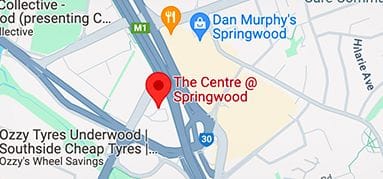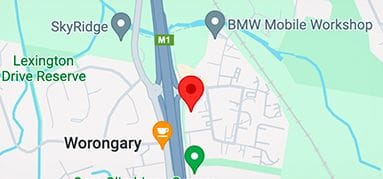Nursing Different Conditions in Cats
Tips & Tricks: Nursing different conditions in cats - Part 1 & 2
Natalie Hunt (BAppSc - VT)
The Inappetant Cat
It is important that cats continue to eat, otherwise they run the risk of hepatic lipidosis and refeeding syndrome.
On the basic level, sometimes cats have just become bored with their food. Or do not enjoy the taste or texture. Try an abundance of different food types and textures.
The important thing is to get these cats to be tempted to eat just a little bit, and this diet does not have to be their ‘forever’ diet.
When should you tempt to feed? Ideally, cats should be offered food every few hours, but it is important to remove it if the cat is not at all interested or showing signs of nausea.
Tempting the inappetant cat with various foods, should be a positive experience. Using lots of encouraging pats and words, and provided in a calm free, quiet manner.
I have tried all these things and my patient still won’t eat? Try Multi-modal anti-emetics, nasogastric or oesophageal feeding tubes.
FLUTD kitties
The initial treatment of FLUTD cats, depending on the severity, tends to follow the same outline:
- Gain IV access, as these patients tend to present as depressed, dehydrated and with the likelihood of electrolyte imbalances.
- Bloodwork, especially blood gas to assess potassium levels, and renal function.
- Temporary unblocking (may require some sedation), including flushing of the urethra.
- Placement of urinary catheter
- Continued monitoring in hospital including fluids, bloodwork assessments depending on severity and duration, and urinary catheter care.
- Removal of urinary catheter and follow up observations of urination.
- Once a cause has been isolated, (crystals, stress etc), it is best to adjust the cat’s lifestyle to attempt to prevent further blockages. Unfortunately, as we all know, these cats tend to often reblock and this can become a costly, and stressful situation for both the owners, and the veterinary team.
How to manage an indwelling urinary catheter
WEARING GLOVES:
- Drain the urinary bag every 4 hours and calculate UOP (ml/kg/hr). Do not disconnect the bag from the urinary catheter as this makes it an open collection system and increases the risk of infection.
- Wipe the prepuce (or vulva) with aqueous chlorhexidine, every 4 hours.
- Flush the sheath with aqueous chlorhexidine, every 8 hours.
- Wipe the urinary catheter line (and bag) with a chlorhexidine & Metho solution (avoiding the insertion site of the catheter)
Post-operative care: Basic & Advanced
Basic
The biggest nursing considerations for recovery from an ovariohysterectomy, is a nice, quiet, and comfortable bed, as well as adequate pain management.
Fractures are also quite common procedures in feline patients. The post-operative treatment of these patients can be heavily dependent on the severity of their injuries, but similarly, as always patients should be pain assessed on an individual basis.
If you are keeping in mind the severity of the injuries, anticipated pain, functions that may be impaired (e.g., bladder control), and adjust your treatments accordingly, you should be able to manage your injured feline patient to a gold standard level.
Advanced
Post-operative care tends to remain similar for a lot of these conditions, and the following are important items to monitor:
- Vitals, specifically HR, RR, pulses (& BP), temperature
- Analgesia and pain management
- Nutrition
- Fluid balance (especially in the cases of urologic and renal cases)
- Overall wellbeing & behaviour
Nutrition is also a particularly important consideration in the post-op patient. Often these cats present after several days of inappetence or vomiting and are already at an increased risk of developing hepatic lipidosis.
The Recumbent Cat
(ie snake envenomation, tick paralysis, polytrauma)
- Comfortable bedding.
- Regular recumbency changes, every 2 to 4 hours, or sooner if the patient seems uncomfortable or restless.
- Soiled bedding. Regular checks are required to monitor urination and defecation.
- Nutrition. This can be in the form of PO feeding, a naso-oesophgeal or naso-gastric tube via their nose, or an oesophageal feeding tube. Fluid therapy is also indicated to prevent dehydration.
- Body temperatures.
- Physiotherapy.
- Circulation.
- Pain management.
- Eye lubrication
- General nursing care.
The Dyspnoeic Cat
Signs of respiratory distress include rapid, shallow and/or noisy breathing. At times they may also open mouth breathe or have an orthopnoeic posture.
Monitoring is imperative until they are stabilised. It is a good idea to familarise yourself with varying lung sounds and what they indicate.
- Upper airway noise: possible obstruction
- Increased lung sounds
- Decreased lung sounds: pulmonary oedema
- Crackles: fluid in alveoli, not specific for heart failure
- Wheezing
Vitals to focus on during the physical exam include but are not limited to:
- Compressibility: may indicate mediastinal mass; older cats also tend to have a decrease in compressibility and can therefore be a red herring
- Subcutaneous Emphysema
- Heart murmurs or gallop rhythms
- Nasal discharge
- Hypersalivation
- Cough
- Temperature (hypothermia is common in patients with heart disease)
- SPO2, often difficult to obtain in patients with poor perfusion
Initial treatment:
- Fly by oxygen, or an oxygen cage. Intubation if indicated
- Visual obs (RR) initially
- Sedation
Ultimately, using common sense and with the idea of ‘what if this were my cat, what would I do? How would I treat them or make them more comfortable?’ will allow you to develop a confidence in proving high standards of feline patient nursing.
| Tags:VSS ConferenceFelineNursingVSS Resource Area |
&geometry(278x56))




